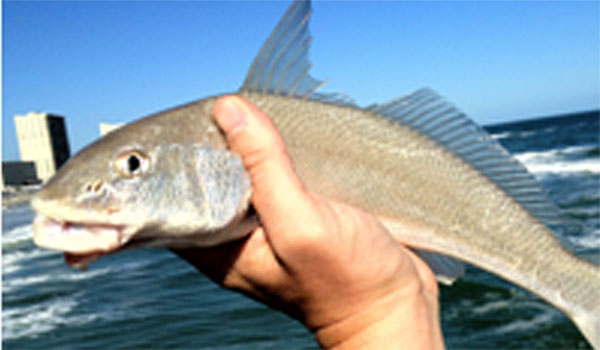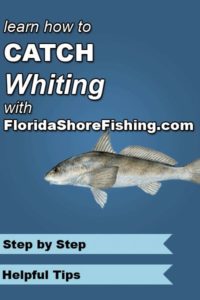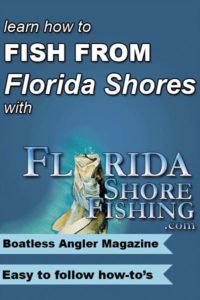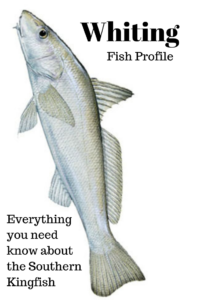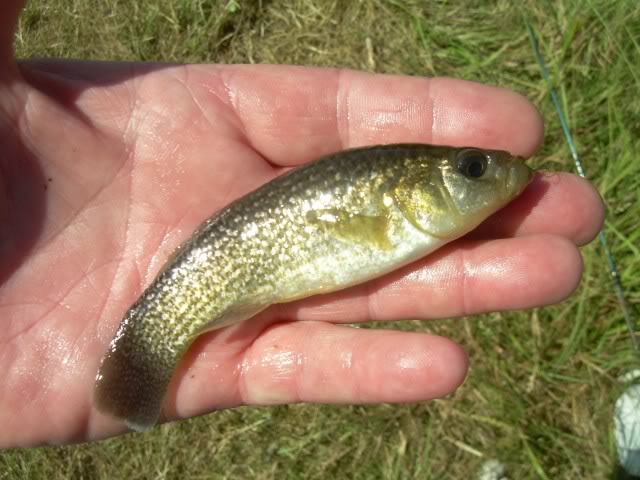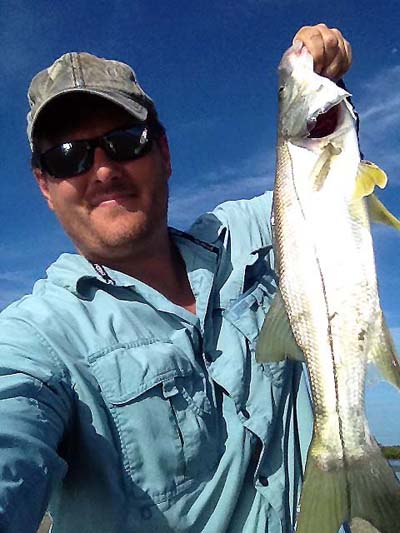 Whiting (Menticirrhus littoralis), also known as Southern Kingfish, average from less than a pound to around one pound in size. They are flat bottomed, silver fish that have barbels (whiskers) to aide them in finding their food along sandy bottoms.
Whiting (Menticirrhus littoralis), also known as Southern Kingfish, average from less than a pound to around one pound in size. They are flat bottomed, silver fish that have barbels (whiskers) to aide them in finding their food along sandy bottoms.
These Fish are one of the most abundant fish along the coast and are very popular amongst anglers not only for their abundance, but because of their highly regarded flavor on the table. While these fish do not get very large (the world record is only 2lb 13oz.), they are put up a rather scrappy fight for their size.
How to Catch Whiting – Where to Find Them
Whiting are most frequently found in the surf zone along the coast. They will hang out just behind breaking waves waiting for the wave action to uncover crustaceans that they feed on. One of their favorite foods is the sand flea (a.k.a. mole crab), and if they are seen in the sand, there is a good chance that whiting will be close by.
While less common, they can also be found around inlets, passes and bays.
Gear
Any saltwater rated gear will be able to handle even the largest whiting, but because they are often found behind breaking waves many feet offshore, long and heavy rods may be required to be able to cast far enough to catch these fish. When fishing from the beach, check out our Surf Fishing Gear (http://www.floridashorefishing.com/surf-fishing-gear) page.
When fishing from a pier or dock, the most popular set up is a spinning reel and medium action rod. Most anglers chose to use a little bit stronger of a set up than is needed to catch whiting because there is always a possibility of catching larger fish such as Black Drum, Redfish and Sharks.
Line
The all around best line for fishing for whiting is braided line. It has a very small diameter allowing which in turn gives it less resistance in the water and in the air. Waves, current and wind are all factors that must be considered when fishing around the surf (where most whiting are caught) and braided line excels at resisting all of these.
The big downside to braid is that it is highly visible. Whenever using braid a fluorocarbon or monofilament leader is always suggested (both will work equally well for whiting). A 10-15lb leader will far exceed the needed strength for whiting and will help land some of the larger fish that are often caught alongside a whiting.
Hooks
Whiting have fairly small mouths that are located at the bottom of their mouth. When they hit a bait the hit ranges from very aggressive to almost undetectable, making circle hooks the best choice for these fish.
Circle hooks ranging in size from #2-2/0 work well with #1-1/0 being the best choices. These smaller circle hooks allow for the smaller mouthed, sometimes undetectable hitting fish to frequently hook themselves. Circle hooks are designed to hook a fish in the corner of the mouth and to reduce gut-hooking fish.
*** When using a circle hook be sure to never “SET THE HOOK” in a traditional sense. When a hit is detected, simple raise the rod tip and reel the fish in. The hook will set itself. If a rapid jerking motion is used with circle hooks, more times than not the hook will be pulled from the fish’s mouth ***
Rigs
As with most fish that are primarily caught in the surf zone there are two rigs that work the best. the fish finder and the double dropper loop rig.
Fish Finder
The fish finder rig is a hook attached to a 12-20” leader. Above the leader is a barrel swivel, a bead and then a egg sinker. When using this rig, use only the amount of weight needed to hold the bottom and no more.
Double Dropper Loop Rig
This rig has the weight at the bottom with 2 loops with hooks on the end of the loops at about 8-12″ intervals above the weight (more loops and hooks can be added as well). This rig works great with frozen bait or live sand fleas. When using a dropper loop rig, putting different types of bait on each hook until the preferred bait of the day is found can lead to more fish caught.
Another advantage to the dropper loop rig is when the fish are running heavy it is not uncommon to catch more than one fish at a time. It is not uncommon to catch 2 whiting on this rig at one time!
Bait
Whiting feed almost exclusively on crustaceans. They cruise the surf zone looking for crabs, shrimp and even small clams that have been disturbed by the breaking waves. While they have been known to eat baitfish, it is not their primary source of nourishment.
The single best bait for Whiting is the Sand Flea. Sand Fleas are small (about the size of a large thumbnail to the size of a quarter) crabs that live in the sand along Florida’s beaches. Sand fleas can be either caught using a sand flea rake (watch for the tell tail V shaped ripples above the sand) or bought at select bait shops.
Other popular baits include:
- live shrimp
- fresh peeled shrimp
- cut clams
- oysters
- small crabs
When using sand fleas insert the hook on their softer underbelly and run it through the top shell, this will keep the bait on the hook as well as release a scent. Peeled shrimp, clams and oysters should be kept to a size small enough to fit in a whitings mouth and threaded on the hook to where the point and barb are just barely visible. When using live shrimp, thread the hook through its shell just behind the horn.
While whiting have been known to take an artificial bait from time to time (primarily jigs and scented artificial shrimp) they are not frequently targeted with lures.
Techniques
When fishing for whiting it is best to look for areas that have two sets of breaking waves. The first set will break near the beach and the second a little further off shore. The second set is breaking on a sand bar (the sandbar moves in and off shore slowly because of currents and tides over days/weeks). Between these two areas is what is known as the trough, that is the single best place to fish for whiting.
After locating and identifying a trough, set up a 2 hook dropper rig that has enough weight on the bottom to cast out to the trough and to prevent the waves and current from moving the bait out of the trough. If more than 3oz of weight is needed, a sputnik weight may be called for (a weight with small arms that grab the sand to stop it from moving). There will be some beaches that have only 1 area that waves are breaking, cast directly behind the break.
A popular presentation for whiting is to use two different types of bait until the most successful one is determined for the day. Place a sand flea on the bottom hook and a piece of peeled shrimp or clam on the top. The bait that catches the most whiting that day can then be used on both hooks to increase the amount of fish caught!
Tips and Tricks
- Often times fresh peeled shrimp will perform better than live shrimp (whiting rely heavily on their sense of smell).
- If you plan to harvest the whiting, soak the meat in milk for an hour to help remove any iodine flavor.
- When sand fleas are your bait of choice, you can buy a sand flea rake and you will have a free source of bait.

